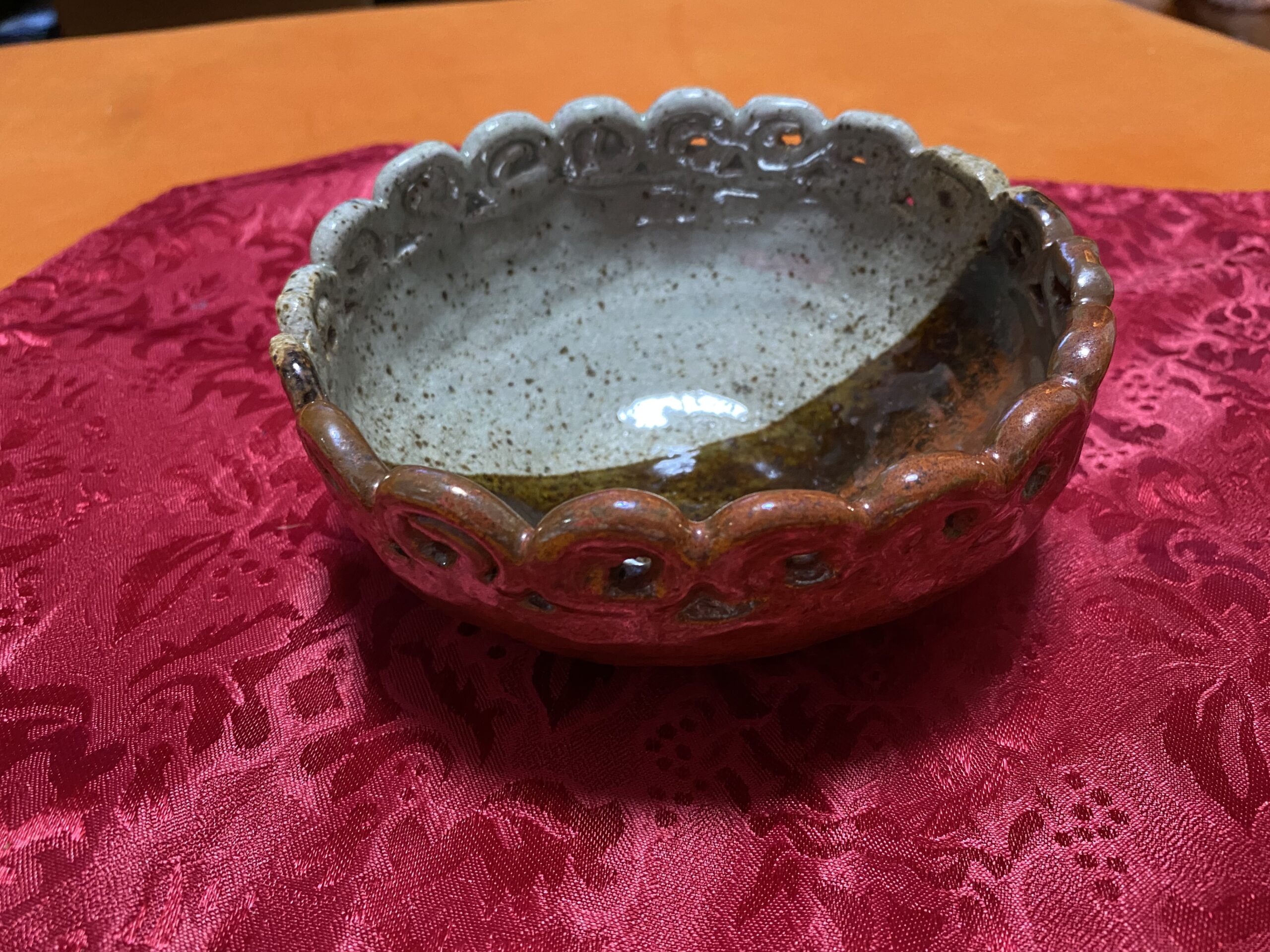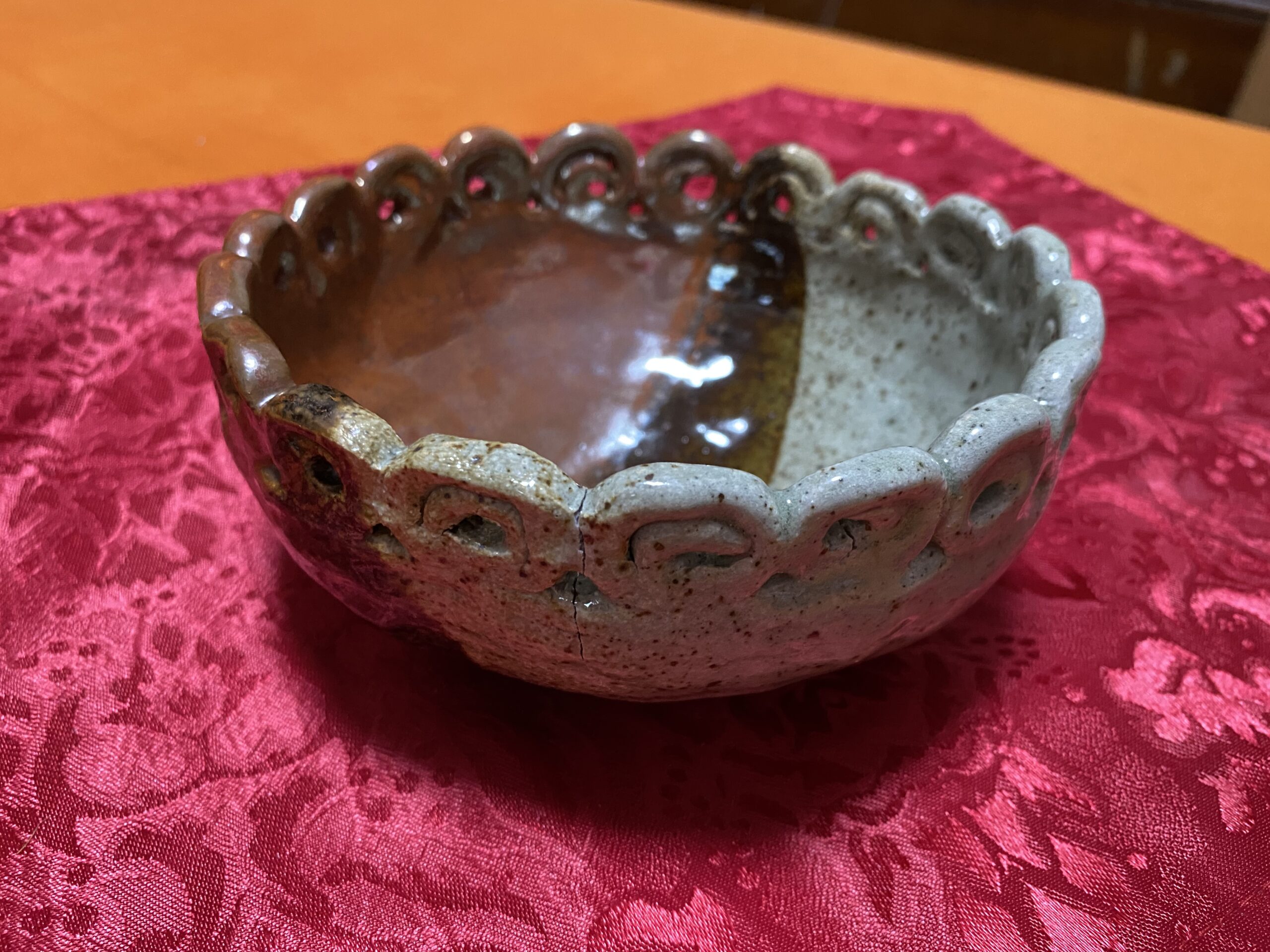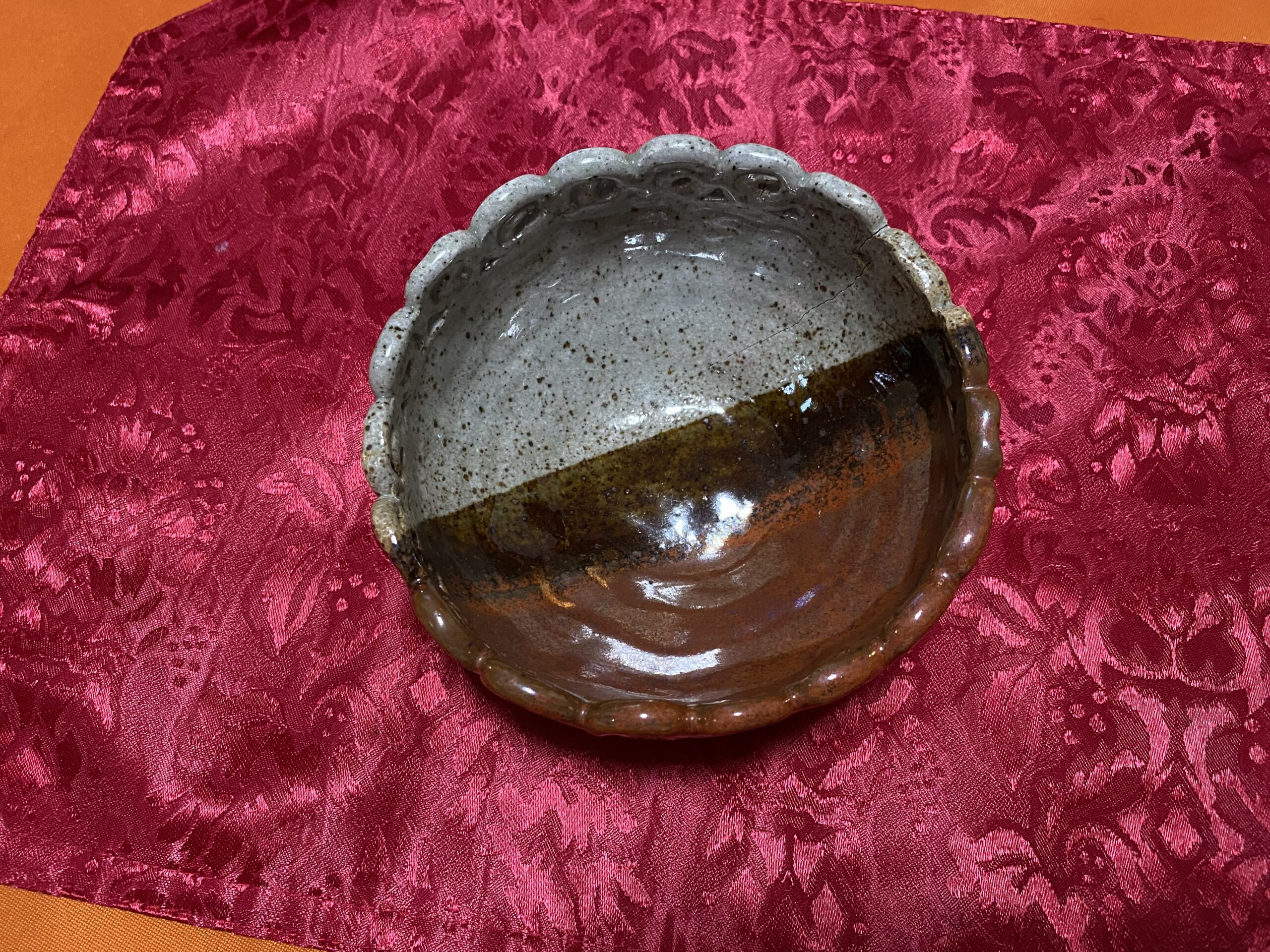Handmade ceramic bowl with red, brown, and gray glaze: Lead-free glaze with trace Lead in the substrate
For those new to the Lead Safe Mama website:
Tamara Rubin is a multiple-federal-award-winning independent advocate for childhood Lead poisoning prevention and consumer goods safety, and a documentary filmmaker. She is also a mother of Lead-poisoned children (two of her four sons were acutely Lead-poisoned in 2005).
- Tamara owns and runs Lead Safe Mama, LLC — a unique community collaborative woman-owned small business for childhood Lead poisoning prevention and consumer goods safety.
- Since July 2022, the work of Lead Safe Mama, LLC has been responsible for six product recalls (FDA and CPSC).
- All test results reported on this website are science-based, accurate, and replicable.
- Please check out our press page to see some of the news coverage of our work, linked here.
Below you will find the XRF readings for metals found for the item pictured. All readings are conducted multiple times to confirm the results for each component before sharing one full set of the readings for the item pictured. Results are replicable, science-based, and accurate.
For some additional background about this work, please read the following links:
- This article discusses the testing methodology we use here on this website.
- Here’s a menu with buttons for many of the different information categories that can be found here on LeadSafeMama.com.
- This links to my documentary feature film on childhood Lead poisoning.
- Here is the short video that shows you how to search this site.
- Items you can test at home with a LeadCheck swab
- Items you really cannot test at home (items better tested with XRF technology)
- This article is discussing some of the context for the concern of Lead in ceramics, dishware, and pottery.
- Here’s an article discussing why you cannot (in most cases) test dishware yourself at home.
Reading #1.) Reddish area of handmade bowl
30-second reading:
- Lead (Pb): non-detect
- Cadmium (Cd): non-detect
- Mercury (Hg): non-detect
- Bromine (Br): non-detect
- Chromium (Cr): non-detect
- Iron (Fe): 48,200 +/- 600 ppm
- Nickel (Ni): 55 +/- 32 ppm
- Copper (Cu): 71 +/- 14 ppm
- Zinc (Zn): 11 +/- 6 ppm
- Tin (Sn): 12 +/- 4 ppm
- Barium (Ba): 1,667 +/- 32 ppm
Reading #2.) Gray area of handmade bowl
50-second reading:
- Lead (Pb): non-detect
- Cadmium (Cd): non-detect
- Mercury (Hg): non-detect
- Bromine (Br): non-detect
- Chromium (Cr): 179 +/- 105 ppm
- Iron (Fe): 14,300 +/- 200 ppm
- Nickel (Ni): 85 +/- 28 ppm
- Copper (Cu): 46 +/- 11 ppm
- Zinc (Zn): 13 +/- 5 ppm
- Zirconium (Zr): 291 +/- 6 ppm
- Barium (Ba): 1,744 +/- 27 ppm
Reading #3.) Unglazed bottom of handmade bowl
60-second reading:
- Lead (Pb): 32 +/- 4 ppm
- Cadmium (Cd): non-detect
- Mercury (Hg): non-detect
- Bromine (Br): non-detect
- Chromium (Cr): 264 +/- 107 ppm
- Iron (Fe): 13,600 +/- 200 ppm
- Copper (Cu): 29 +/- 11 ppm
- Zinc (Zn): 17 +/- 5 ppm
- Zirconium (Zr): 268 +/- 5 ppm
- Indium (In): 5 +/- 3 ppm
- Tin (Sn): 11 +/- 3 ppm
- Barium (Ba): 1,678 +/- 26 ppm
- Platinum (Pt): 55 +/- 13 ppm
Reading #4.) Overlap brown area of handmade bowl
60-second reading:
- Lead (Pb): non-detect
- Cadmium (Cd): non-detect
- Mercury (Hg): non-detect
- Bromine (Br): non-detect
- Chromium (Cr): non-detect
- Iron (Fe): 48,200 +/- 600 ppm
- Nickel (Ni): 55 +/- 32 ppm
- Copper (Cu): 71 +/- 14 ppm
- Zinc (Zn): 11 +/- 6 ppm
- Tin (Sn): 12 +/- 4 ppm
- Barium (Ba): 1,667 +/- 32 ppm
Some additional reading that may be of interest:
- Here are some additional handmade ceramic pieces we have tested.
- Here’s an overview with other types of china/ dishes we have tested.
As always, please let me know if you have any questions. Thank you for reading and thank you for sharing this work.
Tamara Rubin
#LeadSafeMama

Never Miss an Important Article Again!
Join our Email List








